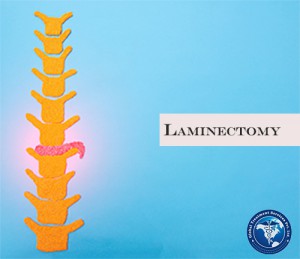What is Laminectomy?
Laminectomy also known as decompression/Lumbar surgery, that creates space by removing the lamina (the back part of a vertebra that covers your spinal canal.) laminectomy enlarges your spinal canal to relieve pressure on the spinal cord or nerves.This pressure is most commonly caused by bony overgrowths within the spinal canal, which can occur in people who have arthritis in their spines. These overgrowths are sometimes referred to as bone spurs, but they’re a normal side effect of the aging process in some people.
Causes:
- mild to severe back pain
- numbness or weakness in the legs
- difficulty walking
- difficulty controlling bladder or bowel movements
A laminectomy is only used if your symptoms interfere with daily life. It’s performed when less invasive treatments have failed.
Why it’s done
Bony overgrowths within the spinal canal can narrow the space available for your spinal cord and nerves. This pressure can cause pain, weakness or numbness that can radiate down your arms or legs.
Because the laminectomy restores spinal canal space but does not cure you of arthritis, it more reliably relieves radiating symptoms from compressed nerves than it does back pain from spinal joints.
Your doctor may recommend laminectomy if:
- Conservative treatment, such as medication or physical therapy, fails to improve your symptoms
- You have muscle weakness or numbness that makes standing or walking difficult
- You experience loss of bowel or bladder control
In some situations, laminectomy may be necessary as part of surgery to treat a herniated spinal disk. Your surgeon may need to remove part of the lamina to gain access to the damaged disk.
Risks
Laminectomy is generally a safe procedure. But as with any surgery, complications may occur. Potential complications include:
- Bleeding
- Infection
- Blood clots
- Nerve injury
- Spinal fluid leak
During laminectomy
Surgeons usually perform laminectomy using general anesthesia, so you’re unconscious during the procedure.
The surgical team monitors your heart rate, blood pressure and blood oxygen levels throughout the procedure. After you’re unconscious and can’t feel any pain:
- The surgeon makes an incision in your back over the affected vertebrae and moves the muscles away from your spine as needed. Small instruments are used to remove the appropriate lamina. The size of the incision may vary depending on your condition and body size. Minimally invasive surgeries typically use smaller incisions than those used for open procedures.
- If laminectomy is being performed as part of surgical treatment for a herniated disk, the surgeon also removes the herniated portion of the disk and any pieces that have broken loose (diskectomy).
- If one of your vertebrae has slipped over another or if you have curvature of the spine, spinal fusion may be necessary to stabilize your spine. During spinal fusion, the surgeon permanently connects two or more of your vertebrae together using bone grafts and, if necessary, metal rods and screws.
- Depending on your condition and individual needs, the surgeon may use a smaller (minimally invasive) incision and a special surgical microscope to perform the operation.
After laminectomy
After surgery, you’re moved to a recovery room where the health care team watches for complications from the surgery and anesthesia. You may also be asked to move your arms and legs. Your doctor may prescribe medication to relieve pain at the incision site.
You might go home the same day as the surgery, although some people may need a short hospital stay. Your doctor may recommend physical therapy after a laminectomy to improve your strength and flexibility.
Depending on the amount of lifting, walking and sitting your job involves, you may be able to return to work within a few weeks. If you also have spinal fusion, your recovery time will be longer.
Takeaway
A laminectomy is only used if your symptoms interfere with daily life. It’s performed when less invasive treatments have failed.
Most people report measurable improvement in their symptoms after laminectomy, particularly a decrease in pain that radiates down the leg or arm. But this benefit may lessen over time if you have a particularly aggressive form of arthritis. Laminectomy is less likely to improve pain in the back itself. A laminectomy will often relieve many symptoms of spinal stenosis. However, it can’t prevent spine problems in the future and it may not completely relieve pain in everyone.People who also have a spinal fusion are more likely to have spinal problems in the future.
if you are looking for treatment or second opinion for the same from the best doctors share your latest reports email us : info@gtsmeditour.com


Post a comment